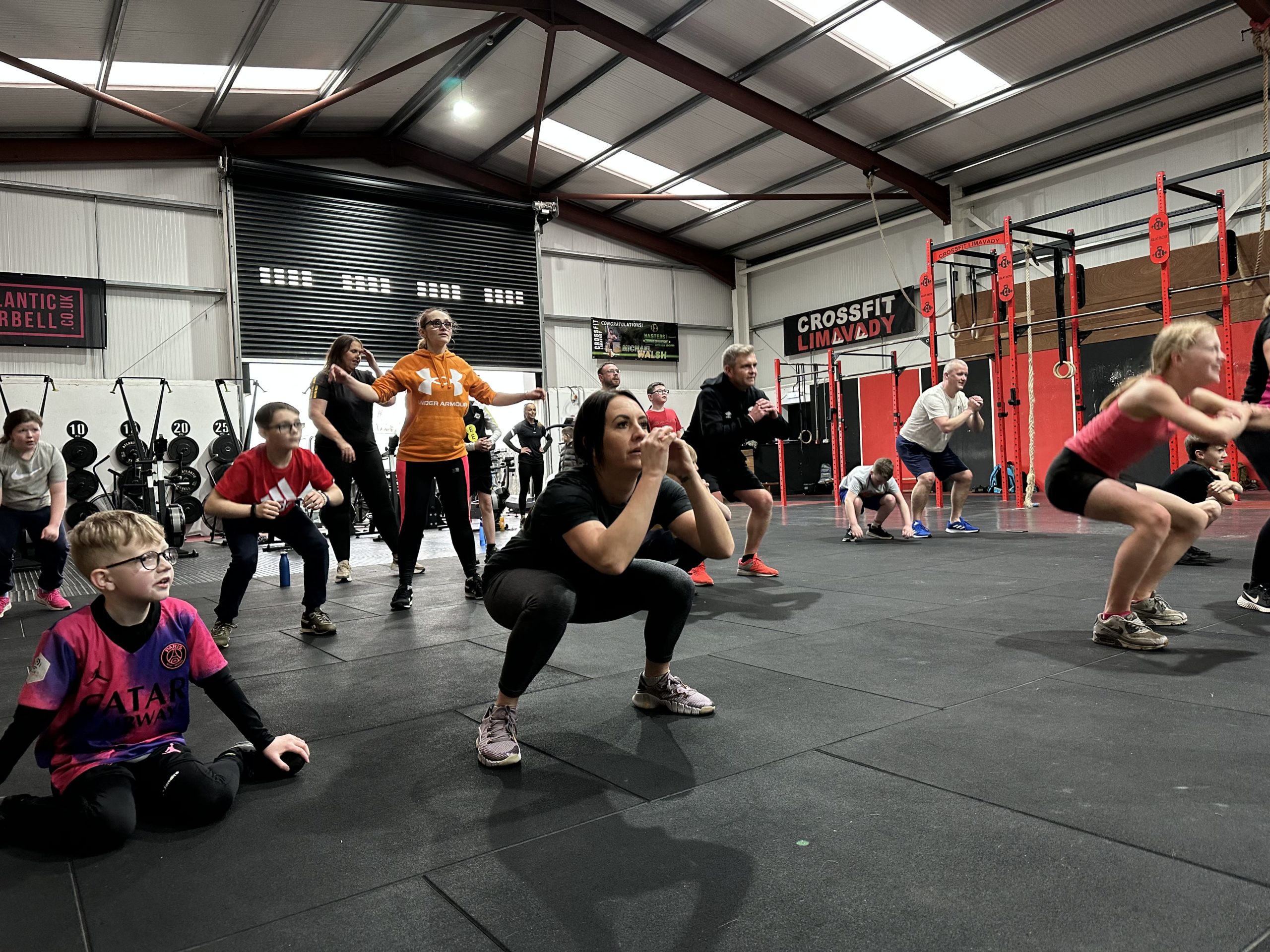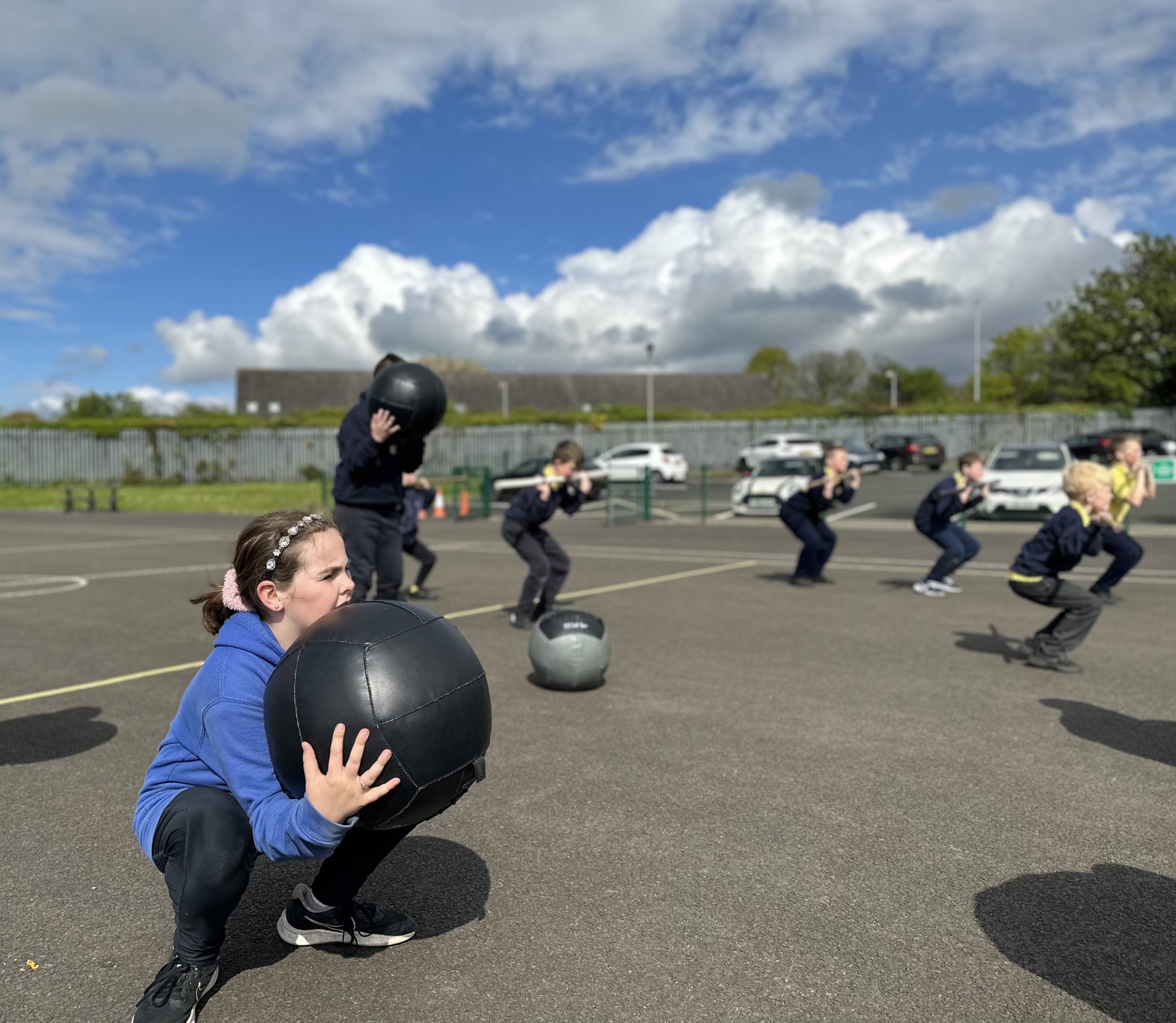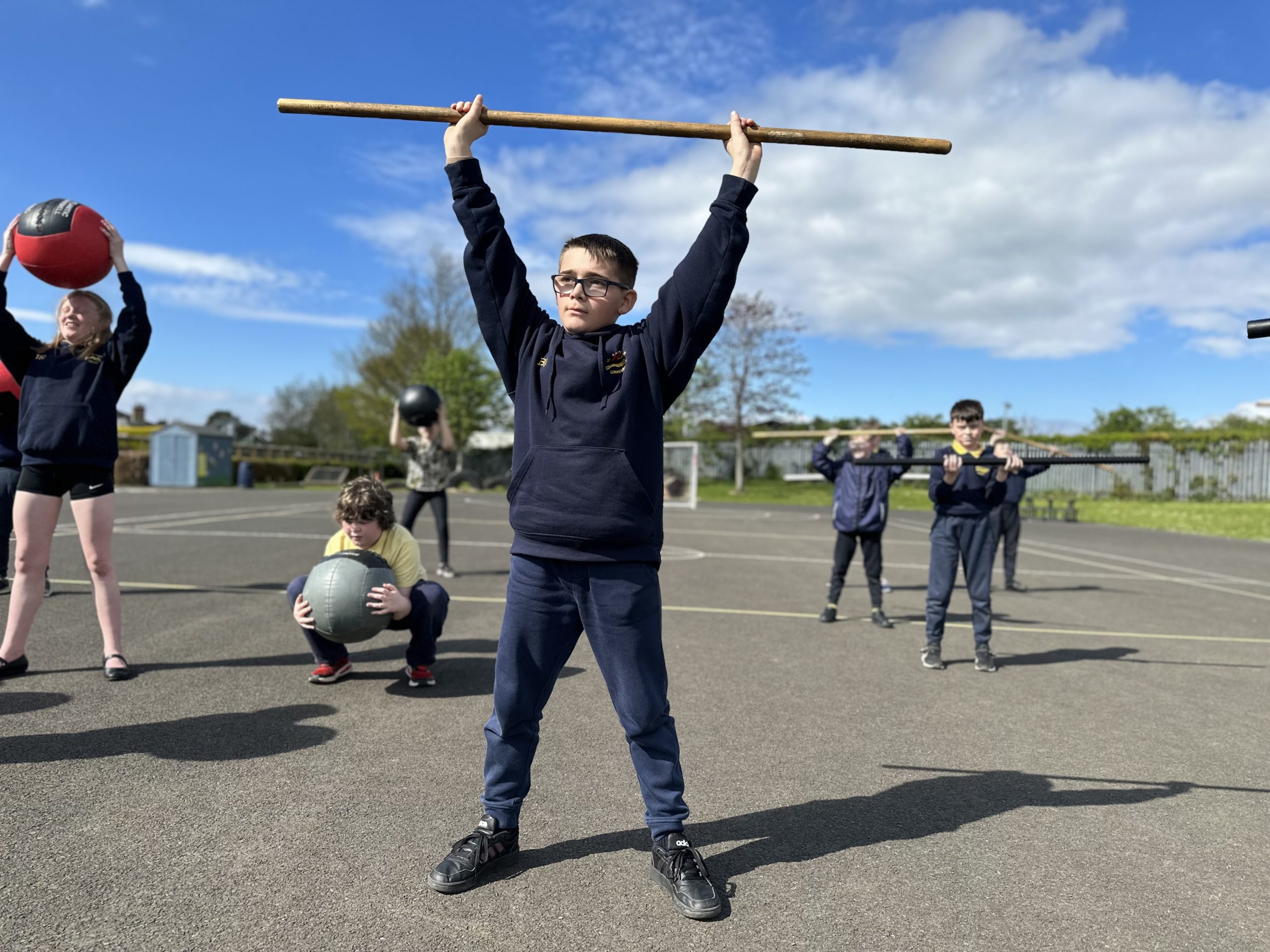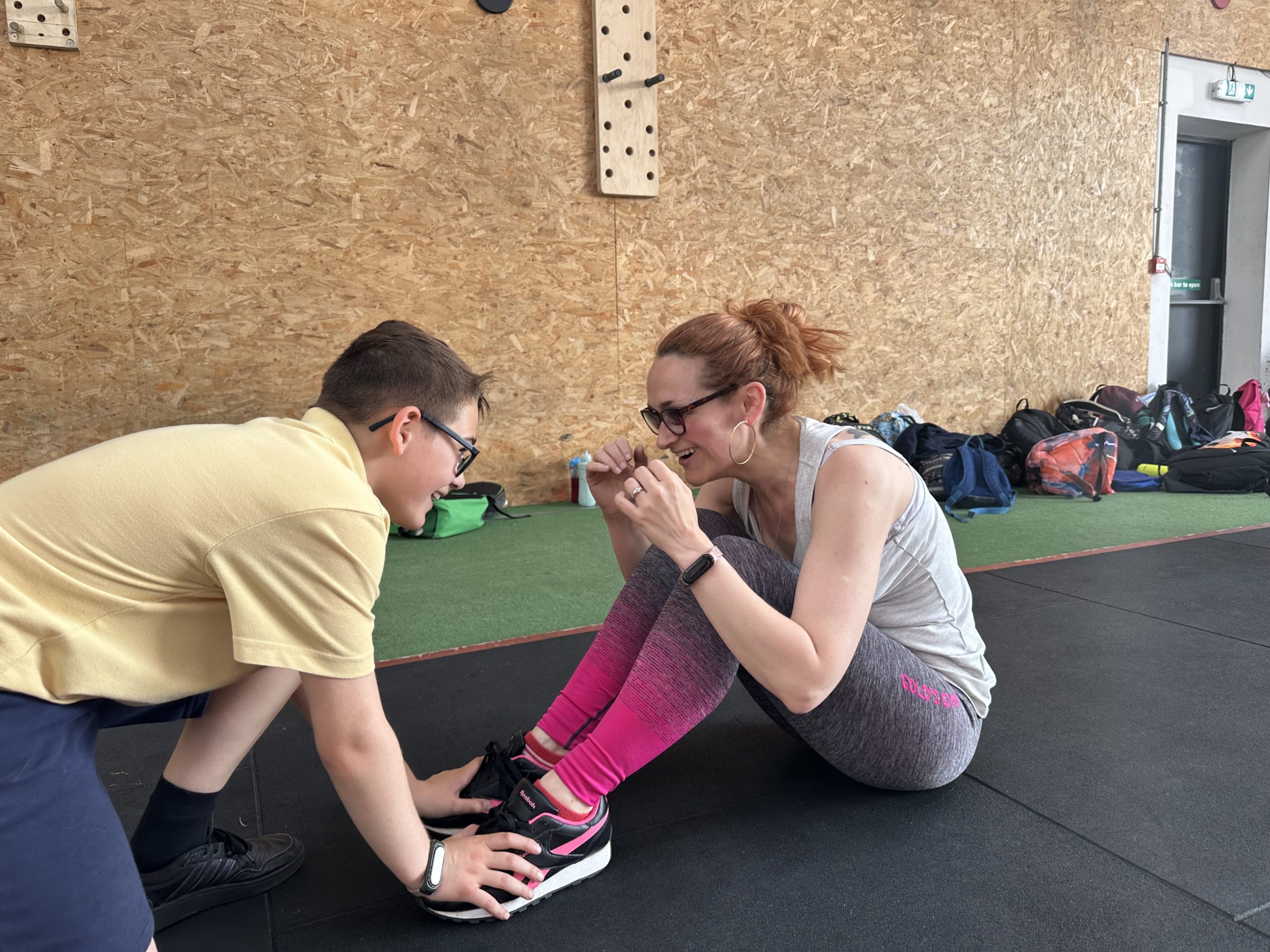The kids are not all right.
Globally, more than 340 million youth aged 5-19 were overweight or obese in 2016. By 2020, so were nearly 40 million children under 5.
Sadly, that’s not news to anyone. Childhood obesity has been on the rise for decades and continues to be an issue exacerbated by an abundance of calorie-dense, nutrient-deficient foods and increasingly sedentary lifestyles.
Unfortunately, that’s not the only problem. Today’s youth are also facing a mental-health crisis: One in seven 10-19-year-olds suffer from a mental disorder, and the prevalence of adolescent depression and anxiety has doubled in the wake of the COVID-19 pandemic.
Even as children have returned to classrooms around the world, it’s not enough. Exercise has been widely shown to improve both physical and mental-health outcomes, yet physical-education (P.E.) guidelines vary widely by country and state. In the U.S., for example, three states — Alaska, Arizona, and Colorado — have no P.E. requirements for students at any grade level.
In Northern Ireland, where Mark Robinson is a primary-school principal, “you’re encouraged that every child should at least get two hours of … physical education a week, but you don’t have to deliver that,” he said. “So P.E. is delivered across our country, but the amount and quality differs.”
What gym class lacks, he continued, is often made up for in sports. But that leaves students who are either uninterested in traditional sports or who lack access to them wanting.
So Robinson decided to bring the CrossFit philosophy to school.

Robinson and his wife had just finished dinner with friends and were sipping on tea and coffee when the livestream of the 2019 CrossFit Games popped up on the TV.
The pair were intrigued — especially Robinson, a lifelong athlete who grew up playing rugby. So they looked up the nearest CrossFit affiliate — CrossFit Coleraine — and have been members ever since.
“It’s been brilliant,” Robinson said. “Just that mental space and community CrossFit brings is so healthy for my mental health and well-being.”
Robinson, 36, has been an educator for more than a decade and principal at Limavady Central Primary School since November 2022, and he’s seen firsthand the evidence of a generation of struggling students, including poor class attendance and increased anxiety. Even after in-person education resumed following the height of the pandemic, he says, sports and other extracurricular activities have seen reduced participation.
Robinson knew he wanted to get kids moving their bodies in a positive social environment — and he wanted that environment to be accessible to all students. CrossFit, he thought, could fill the gaps inherent in traditional school P.E. and sports programs.
“One thing that I’ve loved about CrossFit that is very different is that I think there’s a really low access level,” he said. “So to play soccer; to play field hockey, Gaelic games, there’s a whole range of skills that you need to have … whereas I think (in) CrossFit — yes, you need the fundamentals coached, but you don’t need to be good.”
CrossFit also provides a unique opportunity for kids who aren’t drawn to team sports — or for whom traditional sports are less accessible — to be athletic.
“In terms of children who have learning disabilities … a traditional physical-education set of lessons or sporting activity isn’t as accessible for them,” Robinson said.
Step No. 1 was to pique students’ interest — by leading by example.
In December 2022, Robinson held a school assembly focused on the importance and benefits of being physically active, sharing pictures and stories from his own experiences in sports and in CrossFit. In a second assembly soon after, he announced that a weekly fitness class would be offered as an extracurricular activity after the holiday break — and shared two personal video messages sent by Irish CrossFit Games athletes Emma McQuaid and Lucy McGonigle, in which they spoke about their own experiences with CrossFit and encouraged the students to try it.
The students found McGonigle — a teenager with two CrossFit Games medals to her name — particularly inspiring.
“That actually was, I think, the real motivating factor for our children,” Robinson said.
Robinson just had to find a coach.

Michael Walsh had been trying to get CrossFit in the schools for years. The owner of Limavady CrossFit in Ireland since 2016 — and a high-level athlete himself, having competed in the CrossFit Games Age-Group Quarterfinals in 2019 and 2021-2023 — he shared Robinson’s perspective on where school sports fall short.
“I always think of the people that maybe don’t play football, soccer, rugby; they could excel in something like CrossFit,” Walsh said.
Walsh has had meetings with administrators at the primary and secondary schools his own children attend.
“They couldn’t wait to get me out of the room,” he said. “Nobody was rude, but … the things in education that they do, it’s kind of set in stone, and if it’s anything outside of that umbrella, we can’t bring it in.”
He even offered to trial the program for free in one school.
“I’m still waiting for that email to come back,” Walsh said. “That was maybe four years ago.”
So when Robinson asked if Walsh would be interested in leading a fitness program at his school — the pair knew each other through friends of friends in the broader CrossFit community in Limavady — Walsh eagerly agreed.
The class launched in the first term of 2023. Within four days, the program was at max capacity with 25 students, ranging in age from 7 to 11. The program has continued every term since.
“It’s our most popular activity consistently,” Robinson said.
Every Friday afternoon, Walsh hauls a vanload of equipment to the school playground. He brings medicine balls and kettlebells; dumbbells and barbells. He even lugs a couple rowers and air bikes to class.
“He’s trying to bring all of this to life and make it real for them,” Robinson said.
Where do they begin? Just like any other CrossFit class: with the air squat.
“It’s just getting them to move and teaching them the fundamentals,” Walsh explained.
As the terms have gone on, Walsh has progressed his young athletes to more complicated movements, loading them with broomsticks and teaching front squats, back squats, thrusters — and even the Olympic lifts.
They do goblet squats and kettlebell carries; they row and bike; they practice push-ups and sit-ups and burpees.
The key, Walsh said, is keeping the kids hungry — not for an afternoon snack, but for improvement. For one session, he brought his own 9-year-old daughter — who can clean and jerk 38 kilos (83 lb) — to demonstrate the Olympic lifts.
“If you practice long enough and hard enough,” Walsh told the students, “you will all be able to do this.”

Walsh keeps the kids moving as much as possible throughout the session while educating them at the same time. For example, he once had them do 21 thrusters with a broomstick followed by 11 burpees, then back to the broomstick for 15 thrusters.
“Do you know what’s making that really hard?” he asked the class. “It’s called ‘intensity.’”
Then he paired the students up and had them take turns doing the movements while the other partner judged.
“We’re going to see who can do it the fastest,” he told them. “And if they’re not doing it properly, you do what’s called a ‘no rep.’”
The goal is to make the workout fun, “but then adding that wee bit of intensity where they’re rolling about, they’re getting the real stimulus,” Walsh said.
Robinson — who likes to be a “hands-on principal” — frequently joins the class for a workout. Both he and Walsh have noticed increased confidence in the students as well as an organic sense of community.
Walsh described the moment the youngest and smallest athlete — a 7-year-old boy — struggled to get his arms around the medicine ball he was attempting to lift for a burden carry. Unprompted, a fellow student offered a helping hand.
“They actually held it to his chest and walked around with him,” Walsh recalled.
Students cheer each other on — the loudest saved for the last to finish — and no one cleans up their equipment until everyone’s finished.
“And that’s just like a natural thing,” Robinson said. “That’s not me stepping in or (Walsh) stepping in and saying ‘This is what we do in CrossFit.’ It’s just lovely to see that.”
Eleven-year-old Micah has been part of the fitness program at the school since the start. While Micah has always enjoyed being active, he doesn’t enjoy the pressure of the team-sports environment.
But in CrossFit, he thrives.
“I one-hundred percent have seen an improvement in Micah’s stamina, strength, and confidence,” said Barbara Loughery, Micah’s mother. “CrossFit has given Micah the chance to be part of a team (or) community without the pressure and intimidation of a mainstream sport such as rugby or football. It has helped him improve his fitness and has a positive impact on his self-esteem.”
Micah reports that he feels “stronger” and is “faster at running,” and plans to continue with the program.
At the end of every term, the class visits Limavady CrossFit to get the full CrossFit experience.
“I always say, ‘This is only a flavor,’” Robinson said of the after-school version of the classes at Limavady. “There’s so much more.”
Parents are invited to come to the affiliate and work out alongside their children, too — not just so they can see their kids in action, but hopefully to see that “this isn’t just a kids extracurricular or a school extracurricular,” Robinson said, “but this is a lifestyle that you can do outside of school.”
It’s an extension of the value system Robinson established when he started at Limavady Central: to care for the school’s children, staff, and families.
“CrossFit is another too; in which we can provide those opportunities to care for everyone,” he said. “And it is a way for the parents to then be active with their child or children.”
Loughery has attended every parent session at the affiliate.
“As someone who has never set foot in a CrossFit gym, I was nervous — but doing this alongside my son was inspiring and fun,” she said. “This should be a part of every school after-school program.”

CrossFit may not be part of every after-school program, but Walsh is working on it. Following the success of the program at Limavady Central Primary School, two other schools reached out to Walsh expressing interest in doing something similar.
Other affiliate owners interested in working with schools, both Walsh and Robinson agreed, should start by looking for those who have faculty or administrators who do CrossFit training themselves.
“If you can have a contact at a school that you’re going to that is part of the CrossFit community, they are your way and one of your main selling points,” Robinson said.
Regardless, you need to come prepared to explain your mission and exactly how it will benefit the students and school.
“You need to be really clear as to the reasons you’re doing whatever the initiative might be,” he said. “Knowing and explaining your ‘why’ is crucial, because if you can’t do that, you’re never going to bring a school leader or school administrator on board.”
But that should be the easy part. Just scroll back up to the stats.
“Just understanding the figures that are out there in terms of the rates of obesity and the need for children to be physically active, the rates of mental-health issues,” Robinson said. “CrossFit sort of ticks all of these (boxes) — and being young is a fantastic time to get them involved and to give them a taster.”
Photos courtesy of Mark Robinson
About the Author
Brittney Saline is Senior Writer and Editor for CrossFit, LLC. Previously, she was a writer and editor for the CrossFit Journal. She’s been sharing powerful stories from and for the CrossFit community since 2012, covering topics ranging from problems with healthcare and Big Pharma to CrossFit’s potential for reversing symptoms of Parkinson’s disease to discourses on femininity and musculature. She lives in Minneapolis, Minnesota, and her favorite CrossFit workouts feature lots of heavy lifting. Got a story to share? Email Brittney here.

School Principal Tackles Youth Health Crisis
5